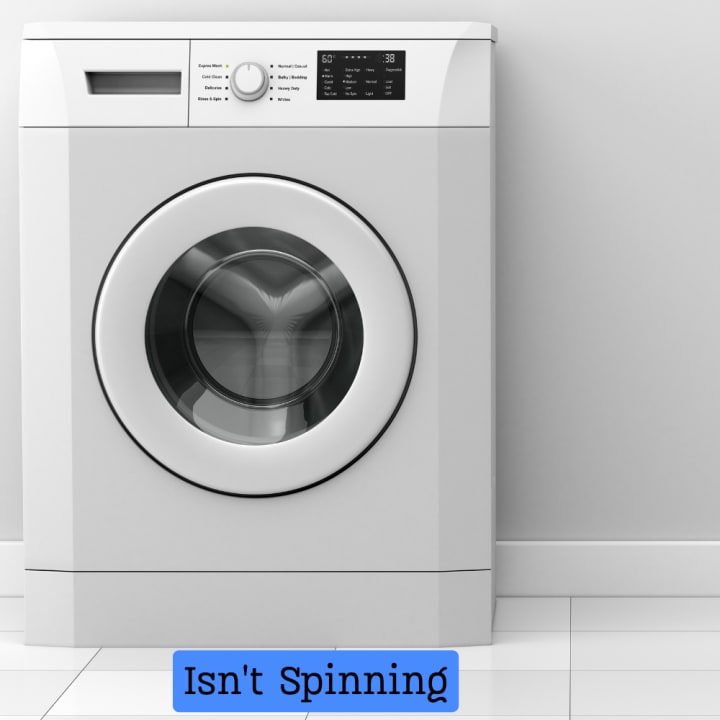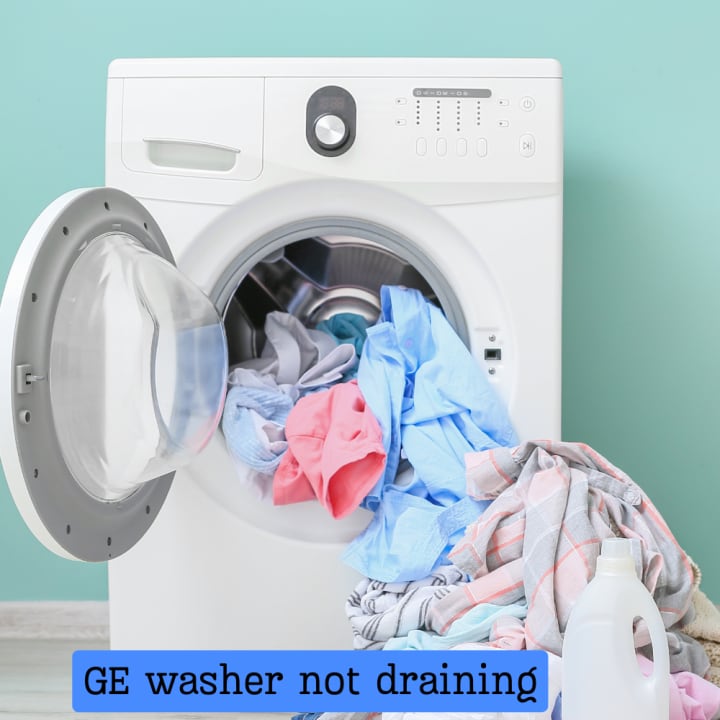Comprehensive Troubleshooting Guide for GE Washer Issues
Simple Fixes for Common GE Washer Problems

Ever had your GE washer go on strike, ruining your laundry day? As an appliance repair expert, I’ve seen every washer problem you can imagine. In this article, you’ll find easy steps to fix common GE washer issues, helping you get back to smooth laundry days.
Common GE Washer Problems and How to Fix Them
In this section, we'll cover the most frequent issues you might encounter with your GE washer and provide practical solutions to get it working again.
When Your GE Washer Isn't Spinning

When your GE washer not spinning, it could be due to an unbalanced load, a faulty lid switch, or drive belt issues.
Symptoms and Causes:
- Unbalanced Load: Sometimes, your washer won't spin because the load inside is unevenly distributed.
- Faulty Lid Switch: This little switch is crucial. If it’s broken, the washer might think the lid is open and won’t spin.
- Drive Belt Issues: If the belt is worn out, the drum won't spin properly.
Troubleshooting Steps:
- Check and Redistribute the Load: Make sure clothes are evenly spread out.
- Inspect and Replace the Lid Switch: If it's faulty, you’ll need a new one.
- Examine the Drive Belt: If it’s worn, replace it.
Troubleshooting GE Washer Drainage Issues

If your GE washer not draining, it could be due to a clogged drain hose, a faulty drain pump, or blocked filters.
Symptoms and Causes:
- Clogged Drain Hose: A blockage can prevent water from draining.
- Faulty Drain Pump: If the pump isn’t working, water won’t drain.
- Blocked Filters: Dirty filters can impede water flow.
Troubleshooting Steps:
- Clean the Drain Hose: Remove any obstructions.
- Test and Replace the Drain Pump: If it’s not working, a new pump is necessary.
- Check and Clean Filters: Ensure they are clear of debris.
Solving GE Washer Water Fill Problems
When your GE washer not filling with water, the problem might lie with the water supply, the water inlet valve, or the pressure switch.
Symptoms and Causes:
- Water Supply Issues: The water valves might be off.
- Faulty Water Inlet Valve: If it’s broken, the washer won’t fill.
- Pressure Switch Problems: This switch detects water levels and can fail.
Troubleshooting Steps:
- Ensure Water Supply is On: Double-check the valves.
- Inspect the Water Inlet Valve: Replace it if it’s faulty.
- Check the Pressure Switch: If it’s not working, get a new one.
Fixing Drain and Spin Issues Together
If your washer is not draining or spinning, it could be due to lid switch issues, a drain pump malfunction, or drive motor problems.
Symptoms and Causes:
- Lid Switch Issues: Again, a common culprit.
- Drain Pump Malfunction: If it’s broken, draining and spinning won’t work.
- Drive Motor Problems: A faulty motor can halt both functions.
Troubleshooting Steps:
- Verify the Lid Switch: Replace if necessary.
- Inspect the Drain Pump: Test and replace if it’s not functioning.
- Diagnose the Drive Motor: If it’s faulty, you’ll need to replace it.
What to Do When Your GE Washer Won’t Start
A GE washer that won't start might be facing power supply problems, control board failure, or door latch issues.
Symptoms and Causes:
- Power Supply Problems: Check the outlet and circuit breaker.
- Control Board Failure: This board controls many functions and can fail.
- Door Latch Issues: If the latch doesn’t lock, the washer won’t start.
Troubleshooting Steps:
- Check the Power Supply: Ensure the washer is plugged in and the circuit breaker is on.
- Inspect the Control Board: Replace if it’s faulty.
- Test the Door Latch: If it’s not locking, replace it.
Ensuring Your Clothes Spin Dry
If your GE washer not spinning clothes dry, it could be due to an incorrect spin cycle selection, drainage issues, or motor problems.
Symptoms and Causes:
- Incorrect Spin Cycle Selection: Make sure you’ve selected the right cycle.
- Drainage Issues: Water left in the drum can prevent proper spinning.
- Motor Problems: A weak motor might not spin fast enough.
Troubleshooting Steps:
- Verify Spin Cycle Selection: Ensure you’ve picked the correct setting.
- Ensure Proper Drainage: Check for and clear any blockages.
- Inspect the Motor: Replace if it’s not working correctly.
Getting Your GE Washer to Agitate Again
When your GE washer not agitating, the issue could be a broken agitator, motor coupling issues, or timer problems.
Symptoms and Causes:
- Broken Agitator: If it’s broken, clothes won’t move.
- Motor Coupling Issues: This connects the motor to the transmission.
- Timer Problems: The timer controls the cycles and can fail.
Troubleshooting Steps:
- Check the Agitator: Replace if it’s broken.
- Inspect the Motor Coupling: Replace if it’s worn out.
- Test the Timer: Replace if it’s not working.
Resolving Power Issues with Your GE Washer
If your GE washer not turning on, it might be due to power issues, a faulty control panel, or door latch problems.
Symptoms and Causes:
- Power Issues: Make sure it’s plugged in.
- Faulty Control Panel: If it’s not working, nothing will.
- Door Latch Problems: If it doesn’t latch, the washer won’t start.
Troubleshooting Steps:
- Verify Power Supply: Check the outlet and reset the breaker.
- Inspect the Control Panel: Replace if it’s faulty.
- Test the Door Latch: Replace if it’s not locking.
Tackling Noisy Spin Cycles
A noisy GE washer that isn't spinning might have an unbalanced load, bearing or pulley issues, or a worn-out drive belt.
Symptoms and Causes:
- Unbalanced Load: It can cause noise.
- Bearing or Pulley Issues: Worn parts make noise.
- Worn Out Drive Belt: A bad belt can cause strange sounds.
Troubleshooting Steps:
- Balance the Load: Redistribute clothes.
- Inspect Bearings and Pulleys: Replace if worn.
- Check the Drive Belt: Replace if necessary.
Addressing Combined Agitation and Spin Failures
If your GE washer not agitating or spinning, it might be due to drive motor failure, transmission issues, or a control board malfunction.
Symptoms and Causes:
- Drive Motor Failure: If it’s dead, nothing will move.
- Transmission Issues: It can prevent spinning and agitating.
- Control Board Malfunction: It might be the brain behind the problem.
Troubleshooting Steps:
- Test the Drive Motor: Replace if it’s not working.
- Inspect the Transmission: Repair or replace if faulty.
- Replace the Control Board: If it’s not working, get a new one.
Conclusion
Keeping your GE washer in top condition is crucial for smooth laundry days. By following these troubleshooting steps, you can fix many common issues yourself. Regular maintenance is key, and if problems persist, don’t hesitate to call in a professional.
About the Creator
HomelySolve
HomelySolve is your go-to guide for smart, easy home solutions. They offer expert advice and tips on a wide range of household topics, helping you make your home better.
Enjoyed the story? Support the Creator.
Subscribe for free to receive all their stories in your feed. You could also pledge your support or give them a one-off tip, letting them know you appreciate their work.






Comments
There are no comments for this story
Be the first to respond and start the conversation.